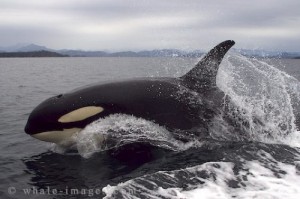
An Orca in the Pacific ocean near Vancouver Island, British Columbia, Canada, image courtesy of Whale-Images.com
Tilikum, an Orca, attacked and killed Dawn Brancheau, a trainer at Seaworld, Orlando, on Wednesday, Feb. 24, 2010.
As reported in Asia One, Ric O’Barry and Dave Phillips of the Earth Island Institute have called for a federal investigation into the death of Ms. Brancheau.
In their statement, O’Barry and Phillips said,
“SeaWorld allowed public and trainer contact with an orca that was a known risk, and after three deaths they’re suggesting that it actually continue…. We believe this situation warrants the immediate initiation of a federal investigation into SeaWorld’s possible negligence and violations of the Marine Mammal Protection Act….Along with sadness of this tragic event we can’t help feeling anger toward those who insist upon exhibiting these wild creatures in habitats that can drive them to violence.”
Let’s look at this from another side.
- Orcas eat fish, as do other whales, dolphins, and humans.
- Fish are high in mercury. (All mercury pollution comes from human industrial activities, much of it from burning coal in power plants).
- Mercury causes brain damage.
This leads to a few questions:
- What is the level of mercury in the Tilikum’s brain and central nervous system?
- Is it causing nervous system damage?
- Is Tilikum “Mad as a Hatter?” Is he suffering from Minamata’s Disease?